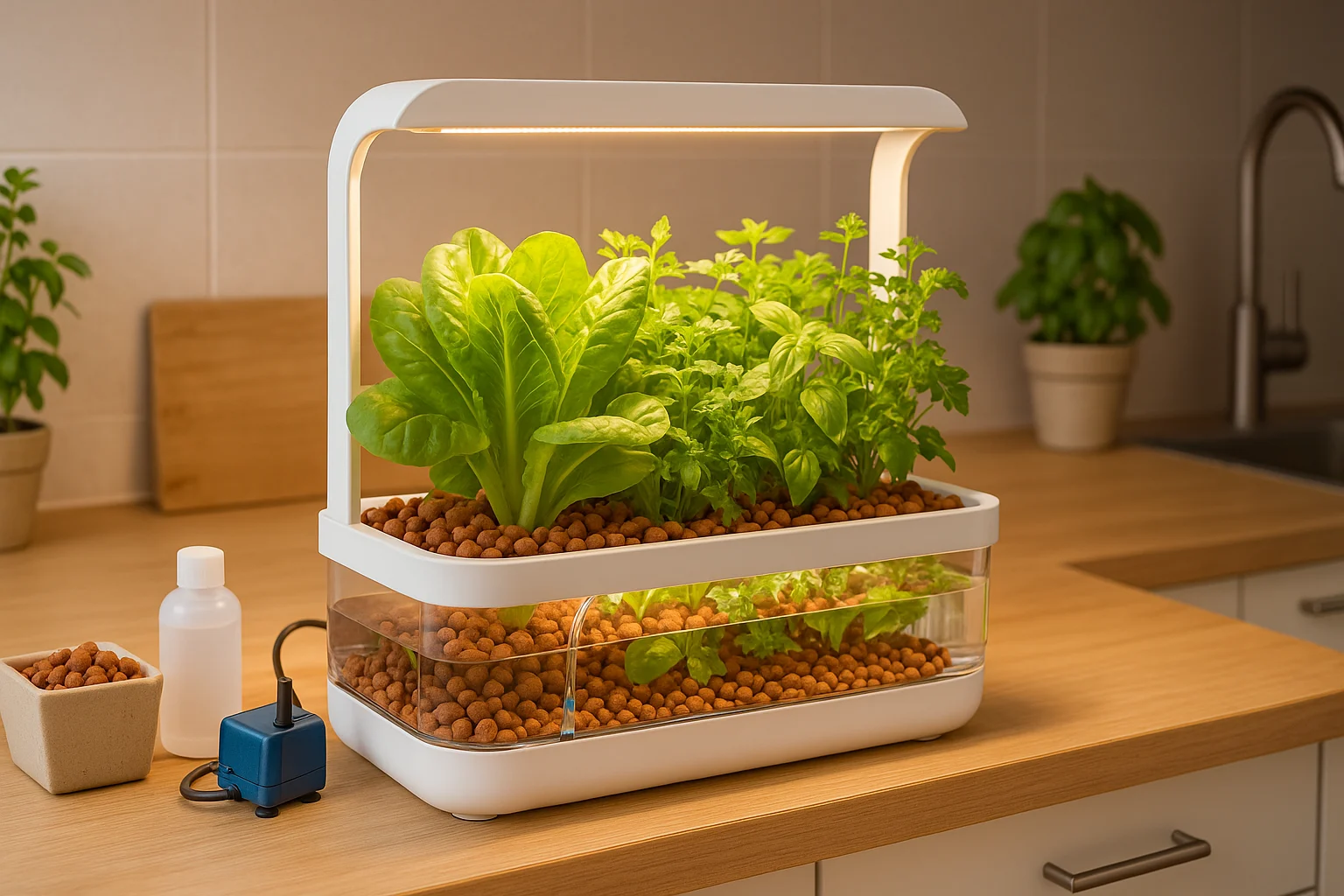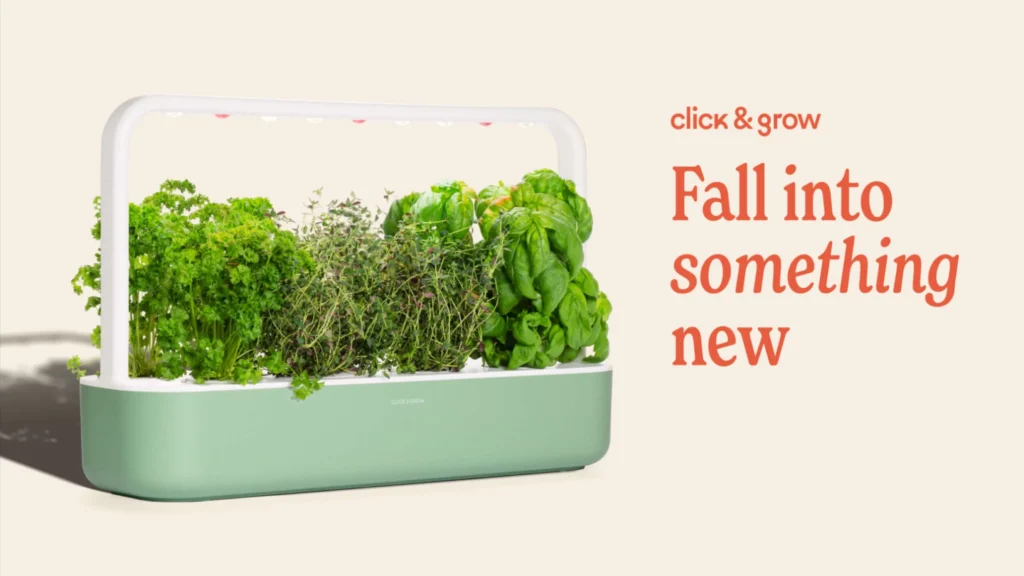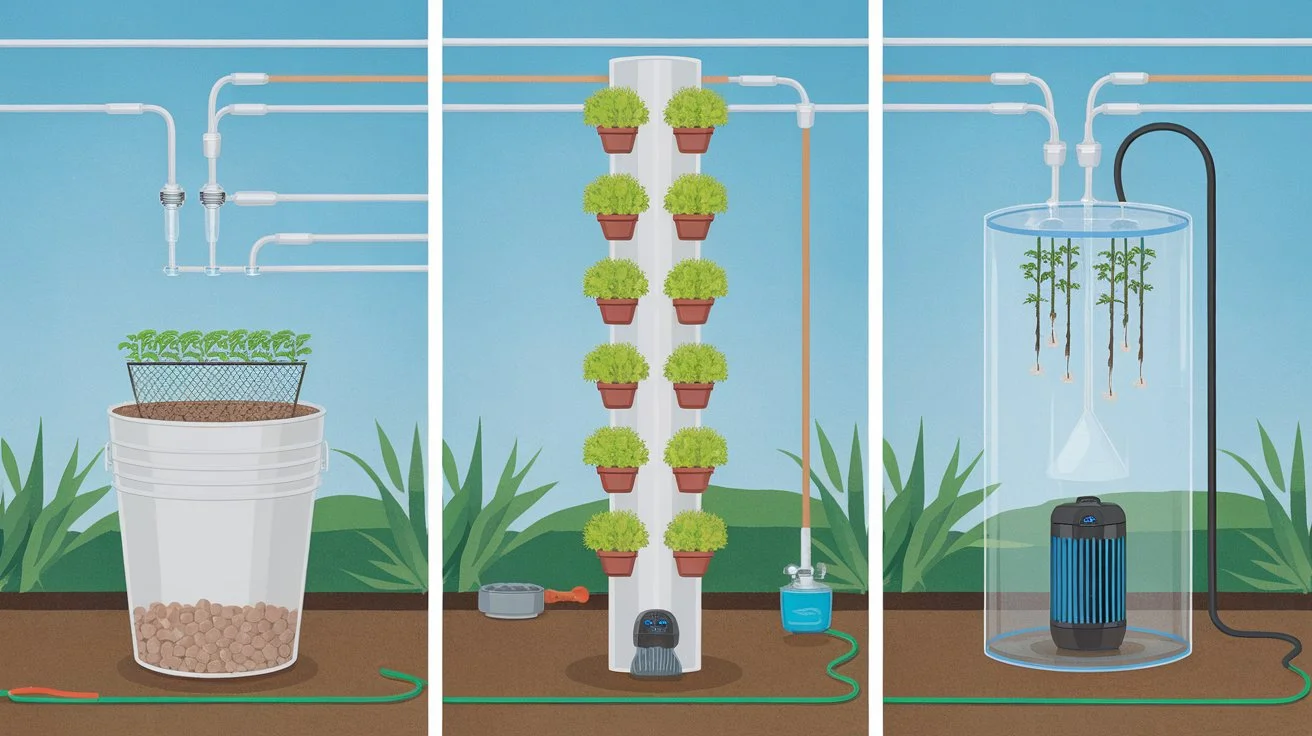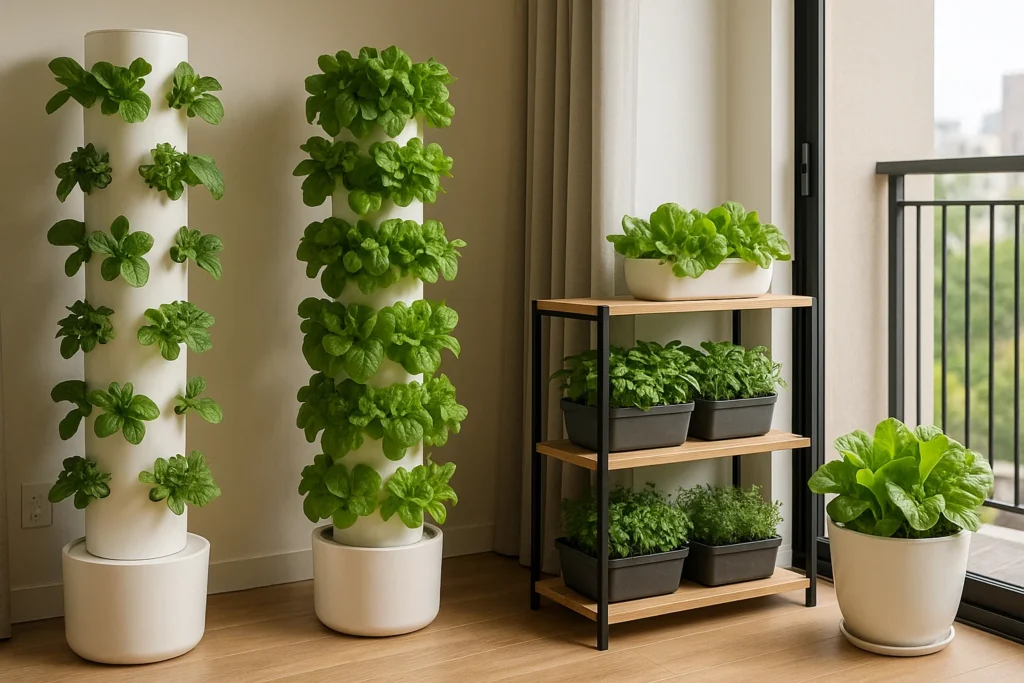DIY Hydroponics at Home: The Complete Beginner’s Guide to Growing Plants Without Soil

Imagine stepping into your kitchen and clipping fresh lettuce from a compact tower you built yourself. That’s the magic of DIY hydroponics at home. In this guide, we’ll cover:
- What hydroponics at home really means (no soil required)
- Why DIY hydroponics is exploding in popularity among urban dwellers
- What you’ll learn: setup essentials, system types, small-space strategies, smart kits, and more
Whether you’re drawn by the promise of faster growth or simply curious about a new hobby, you’ll find plenty here to get started.
DIY Hydroponics at Home / Hydroponics at Home
Growing fresh greens without soil feels almost futuristic, yet it’s entirely possible right in your kitchen or apartment. With DIY hydroponics at home, you’re not tied to garden beds or fickle weather—you set the pace, from a simple homemade wick system to a sleek, app-controlled tower.
Some people dive straight into building every component themselves, relishing the trial-and-error of custom piping. Others prefer to start with a ready-made kit, claiming it still counts as hydroponics at home if it delivers crisp lettuce in weeks. Both paths lead to satisfying harvests, even if one feels like a weekend project and the other like a slow, steady experiment.
As you refine your setup—tweaking pH here, adjusting light schedules there—you’ll find DIY hydroponics at home becomes more than a hobby. It evolves into a personal science, where small changes can mean bigger yields. And whether you stick with a basic bucket system or upgrade to a high-tech rig, hydroponics at home always offers room to learn and adapt.
What You Need to Get Started
Getting into DIY hydroponics at home needn’t be expensive or complex. Here are the bare essentials:
- Growing container or reservoir. You can repurpose a fish tank or use a purpose-built tub. Some gardeners swear a five-gallon bucket is all you ever need; others insist a proper reservoir pays dividends in consistency.
- Water pump and air pump. Many omit an air pump, claiming roots adapt, but I’ve observed noticeably healthier greens with bubbled oxygen.
- Grow medium. Clay pebbles, rockwool, or coco coir each have their advocates. I once tried pure sand—technically it worked, though not without daily adjustments.
- Nutrient solution. A balanced, soilless formula is essential. A teaspoon of Epsom salt weekly can help magnesium uptake, though some experts dismiss this as unnecessary.
- Light source. Natural sunlight, fluorescent tubes, or LEDs: experiences vary. Many report superior growth under LEDs, yet I’ve found a south-facing window yields equally robust results for leafy greens.
For a step-by-step assembly, see our Indoor Setup Guide.
Types of Hydroponic Systems (And How to Choose One)
Not all home hydroponic systems are equal. Your choice depends on space, budget, and ambition:
- Wick & Kratky systems. True DIY hydroponics at home—no pumps, no power. Growth can be slower, but the simplicity appeals to beginners. Critics note inconsistent yields, yet the peace of mind is unmatched.
- Deep Water Culture (DWC). Rapid root development and fast growth. Keep a careful eye on pH to prevent stunted plants. Some gardeners test only weekly and still report excellent results.
- Nutrient Film Technique (NFT) vs. DWC vs. Aeroponics. NFT often wins for lettuce weight, aeroponics surprises with fruit yield, and DWC sits in the middle—versatile but pH-sensitive. Your local climate and patience level will guide the best pick.
Explore detailed comparisons in our Types of Systems and NFT vs DWC vs Aeroponics article.
Growing Hydroponics in Small Spaces or Apartments
You don’t need acreage to master hydroponics at home. Even balconies and closets can yield impressive harvests:
- Vertical towers. Stack planters to maximize floor space. I’ve seen four tiers flourish in a tiny nook—though initial setup can feel overly intricate.
- Compact DWC buckets. Place them near bright windows. Some indoor growers swear their basil in buckets outperforms garden plots, while others lament the lack of flavor.
- Succession planting. Grow lettuce quickly between slower staples, like herbs. It’s efficient, if you enjoy scheduling. A few readers find the timing stress outweighs the benefits.
For inspiring small-space designs, check our “No Backyard? No Problem” feature.
Automation, Smart Kits & AI-Driven Systems
True DIY hydroponics without daily fuss is possible with tech:
- Auto-dosing nutrient controllers. Some consider this overkill; yields often tell a different story.
- Real-time pH and EC monitoring. Alerts can be intrusive—one user reported nightly pH warnings—but they catch issues before they escalate.
- App-controlled LED lighting. Mimic natural cycles or experiment with 24-hour light; opinions vary on whether constant light truly accelerates growth.
Dive deeper into top smart hydroponic systems in our “AI Hydroponic Garden That Grew My Salad While I Slept” review.
What to Grow First (And What to Avoid)
Begin with forgiving, rewarding plants in your home hydroponic garden:
- Lettuce & Herbs (basil, mint). Quick to harvest, and mistakes are usually cosmetic.
- Spinach & Kale. Nutrient-rich and surprisingly tolerant of minor pH swings. My neighbor’s kale thrived—even when I forgot to top up nutrients for a week.
- Strawberries. Rewarding fruit project, though some find the flavor underwhelming compared to field-grown. I found mine delightful; tastes do differ.
Avoid heavy fruiters like tomatoes until you’ve mastered basics. For a comprehensive list, see “Best Plants to Grow Hydroponically.”
Common Mistakes to Avoid
Algae blooms. Keep your reservoir opaque—or embrace the green and clean weekly if you don’t mind extra work.
pH swings. Daily checks matter, though some growers skip them entirely with no reported losses—results vary.
Overfeeding. Burned roots are the usual culprit. Try feeding at half-strength to minimize risk.
Insufficient light. Aim for 12–16 hours under LEDs for leafy greens. Some growers succeed with as little as 8 hours, but growth slows predictably.
For a step-by-step, beginner-friendly walkthrough, see the University of Minnesota Extension’s “Small-Scale Hydroponics” guide.
Ready to Start DIY Hydroponics at Home?
👉 Take our step-by-step quiz to find your ideal system.
👉 Plan precisely with the Plant Spacing Calculator.



